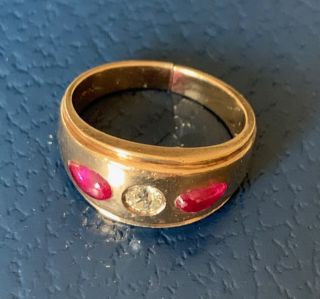Ethics and Morality
How to Receive Gifts as a Psychotherapist
Personal Perspective: Sometimes it takes decades to understand a gift's meaning.
Posted September 29, 2023 Reviewed by Ray Parker
Key points
- Guidelines for acknowledging gifts help sustain the treatment alliance in psychotherapy.
- Over the course of a career, psychotherapists may come to understand gifts differently.
- There are different ways that gifts can be meaningful throughout our lives.

It began over four decades ago with the gift of a ring and was followed by offers of daffodils, freshly picked apples, a glass paperweight containing the image of acrobats, and an antique silver soup spoon. These items constitute a partial inventory of gifts offered by patients in my care.
It is also a list of offerings I wish I had responded to differently and one gift that I came to appreciate only later in life.
Like many healthcare providers, I was aware of the ethics of not accepting large gifts and, later, as a psychotherapist, the importance of exploring with patients the meaning of gift-giving within the framework of psychodynamic treatment. But despite my intention to adhere to ethical and clinical guidelines, I’ve often scrambled in the moment of being offered a gift to implement a best practice approach—with questionable results.
My gift history began dubiously with an elderly patient whom I will call Helen and for whom I provided care in an intensive care unit when I was a fledgling medical intern. One day, when I was making ICU rounds, Helen propped herself up in bed and surprised me by giving me a ring.
I accepted this gift to her evident pleasure but don’t recall if I asked Helen what the ring signified or considered its monetary value. This was one of many omissions in the life of a harried medical intern, whose to-do list didn’t include reflecting upon anything other than physical findings and lab values.
The ring went into a pill box and remained unexamined for over forty years. This dormancy reflected my uncertainty about what saying “no thank you” would mean to a patient nearing the end of her life. To provide some exculpatory cover, I thought I would understand this gift at a later time, although I’m not sure if this meant I would be less harried or more mature and thus be able to more fully understand what Helen hoped to convey. I hadn’t anticipated this would take four decades.
In the intervening years, psychotherapy training and practice provided a framework for thinking about gifts in the treatment room. Gifts could represent a down payment to secure a therapist’s interest, provide expiation for perceived transgressions, or convey aggression to make the therapist uncomfortable. Gifts could also be an expression of gratitude or agency.
Decoding these subtexts in the spontaneous moment of gift-giving is a challenge for even the nimblest psychotherapist. Not being in that category, I refused all gifts for many years of psychotherapy practice but invited patients to explore the meaning of gift-giving.
Often, this resulted in a partial clarification of motivations for offering gifts with a taint of rejection that lingered in the treatment. I think of a patient in intermittent treatment over several decades, who occasionally mentioned his gift of daffodils rebuffed early in our work together.
Perhaps this reflected a lifelong sensitization to transgressions he might be committing; he is, after all, a clergy member, but this sting persisted despite our exploration of it. Another patient, many years after we stopped working together, teasingly reminded me of his apples that I declined to accept.
In considering these and other patients, a more nuanced approach would have been to invite patients to talk about the meaning of their gifts and then to accept them, particularly if the gifts were not of great value, offered towards the end of treatment, or part of a cultural tradition in which patients expressed gratitude to providers. These are the views shared by most psychologists surveyed on gift acceptance and decline (Brown & Trangsrud, 2008).
I wish I had this presence of mind to fully acknowledge Helen’s gift at the beginning of my career. Her ring turned out to be a vintage old European cut diamond set in a yellow gold mounting, possibly dating back to the 1930s or 1940s, and may have been an engagement ring. An appraiser recently guessed this provenance, but it would have been better if I had asked Helen directly about the ring’s significance.
I cannot undo this omission or return the gift, but I can imagine a conversation in which Helen suggests that as I approached her age, I would understand gifts differently. Beyond an expression of gratitude for her care, the gift of her ring might have expressed a wish to be remembered as she neared the end of her life. In this, she succeeded.
Perhaps the ring was waiting for me to catch up with it. I was looking for solace after the death of my husband, whom I met several years before Helen was a patient in my care. Opening the ring box and beholding a symbol of timelessness was a great comfort.
Helen was reminding me of the enduring value of gifts we give each other and of the cycle of giving and receiving that defines our legacy. For this, I owe Helen a forty-four-year belated thank you.
References
Brown, C., & Trangsrud, H.B. (2008). Factors Associated with Acceptance and Decline of Client Gift Giving. Professional Psychology: Research and Practice. 5:505-511. DOI: 10.1037/0735-7028.39.5.505




